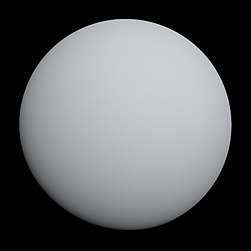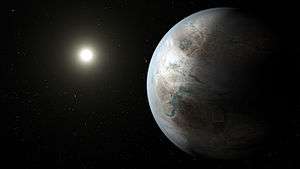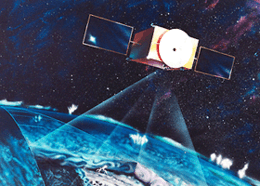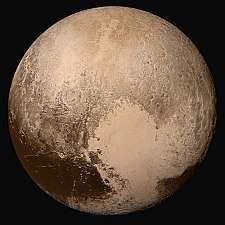K2-18b
| Exoplanet | List of exoplanets
| |||||
|---|---|---|---|---|---|---|
| Parent star | ||||||
| Star | K2-18 | |||||
| Constellation | Leo[1] | |||||
| Right ascension | (α) | 11h 30m 14.5176s[2] | ||||
| Declination | (δ) | 07° 35′ 18.257″[2] | ||||
| Distance | 124.2±0.3[2] ly (38.07±0.08[2] pc) | |||||
| Spectral type | M2.5 V[3] | |||||
| Mass | (m) | 0.413±0.043[3] M☉ | ||||
| Radius | (r) | 0.394±0.038[3] R☉ | ||||
| Temperature | (T) | 3503±60[3] K | ||||
| Metallicity | [Fe/H] | 0.090±0.090[3] | ||||
| Age | null[3] Gyr | |||||
| Physical characteristics | ||||||
| Mass | (m) | 7.96 (± 1.91) M⊕ | ||||
| Radius | (r) | 2.24±0.23[3] R⊕ | ||||
| Temperature | (T) | 235 K (−38 °C; −37 °F) | ||||
| Orbital elements | ||||||
| Semi-major axis | (a) | 0.1491[3] AU | ||||
| Eccentricity | (e) | <0.43 | ||||
| Orbital period | (P) | 32.94488[3] d | ||||
| Inclination | (i) | null[3]° | ||||
| Discovery information | ||||||
| Discovery date | 2015 | |||||
| Discoverer(s) | ||||||
| Discovery method | Transit | |||||
| Discovery site | Kepler Space Observatory | |||||
| Discovery status | Confirmed | |||||
K2-18b also known as EPIC 201912552 b is an exoplanet orbiting the red dwarf star K2-18 every 33 days. It is 124 ly away[2] in the constellation Leo.[1]
Physical Characteristics
The planet may have a rocky surface and an atmosphere providing similar insulation to Earth's, according to a study published in mid-2017. However, the same study also states that the planet could be primarily water-based with a thick ice surface; as of yet, its exact structure is unknown. K2-18b is within the habitable zone of its star and could have oceans of liquid water on its surface.[4][5]
References
- 1 2 Roman, Nancy G. (1987). "Identification of a Constellation From a Position". Publications of the Astronomical Society of the Pacific. 99 (617): 695–699. Bibcode:1987PASP...99..695R. doi:10.1086/132034. Vizier query form
- 1 2 3 4 5 Brown, A. G. A.; et al. (Gaia collaboration) (August 2018). "Gaia Data Release 2: Summary of the contents and survey properties". Astronomy & Astrophysics. 616. A1. arXiv:1804.09365. Bibcode:2018A&A...616A...1G. doi:10.1051/0004-6361/201833051. Gaia DR2 record for this source at VizieR.
- 1 2 3 4 5 6 7 8 9 10 "K2-18 b CONFIRMED PLANET OVERVIEW PAGE". NASA Exoplanet Archive. Retrieved 2015-10-17.
- ↑ "Two Super-Earths around star K2-18". 20 October 2017.
- ↑ Cloutier, R.; et al. (2017). "Characterization of the K2-18 multi-planetary system with HARPS. A habitable zone super-Earth and discovery of a second, warm super-Earth on a non-coplanar orbit". Astronomy and Astrophysics. 608 (35). A35. arXiv:1707.04292. Bibcode:2017A&A...608A..35C. doi:10.1051/0004-6361/201731558.
This article is issued from
Wikipedia.
The text is licensed under Creative Commons - Attribution - Sharealike.
Additional terms may apply for the media files.




